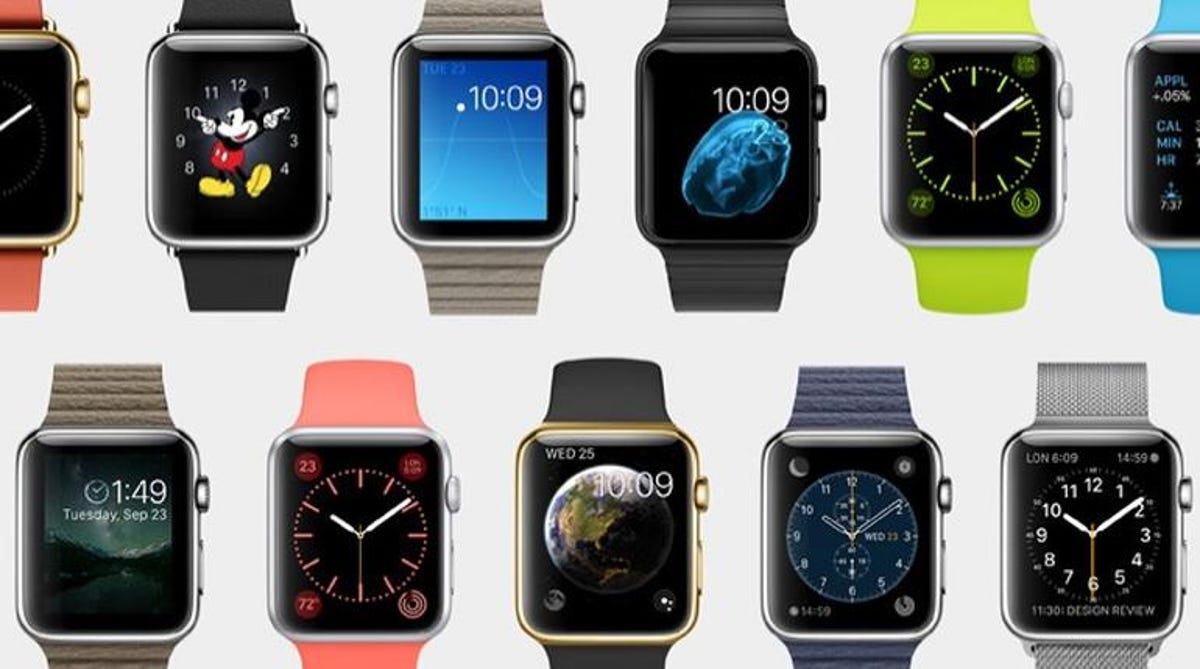
Apple
Apple has covered its design bases with the upcoming Apple Watch. It will come in two sizes, with six bands, and in three “collections,” including a more durable sports model and a high-end version finished in 18-karat gold.
Offering so many options at launch may even be unprecedented for Apple as it enters a new category. The Apple II, Mac, iPod, iPad and iPhone all started with a single product.
Many of these products, like the original iPod (now Classic), iPad, iPhone and MacBook Pro, have seen relatively minor variations over the years. But sometimes Apple has made more dramatic changes, often after the first iteration of a product.
In doing so, Apple shows that even as it praises its own designs out of the gate, it sometimes quickly rethinks them. In the case of the Apple Watch, perhaps the company may decide to go for something round like the Moto360 — or a design that’s even more unusual.
To refresh your memory, here are several products that Apple has changed the design of significantly from one generation to the next.
iMac. The original bulbous iMac marked the beginning of Apple’s comeback trail and the company experimented with a range of colors and designs for its Volkswagen Beetle-like shell. (Anyone remember Flower Power?) However, the iMac G4 was the first flat-panel iMac and was inspired by the design of the Luxo lamp. Apple waxed on about the arm that connected the base to the thin display. However, later iterations gave us the basics of today’s easel-style iMac that have all the electronics behind the display.


Apple
MacBook Air. The first MacBook Air took the crown for the world’s thinnest laptop. It was tapered on the sides and had the USB port behind an inconvenient door. The second generation yielded the design in use today with USB ports on both sides and dispensed with the door that proved problematic for some peripherals.
iBook. Apple’s first iBook looked a bit like a cross-section of the first iMac, complete with a round design and translucent plastic. It also was somewhat reminiscent of the eMate 300, the green translucent education clamshell. Critics said the iBook resembled a toilet seat, though, and Apple went to a more traditional white polycarbonate glossy clamshell that matched the exterior surface of the iMac. Eventually, Apple phased out its “consumer notebook” as the slick MacBook Air brand offered more style at a similar price.


Apple
Apple TV. One of the first modern Apple products that dropped the “i” for “Apple,” Apple TV was originally a silver, hard-drive-based product that was introduced as an iTunes accessory to which you could download movies. Its rear accommodated component cables for standard-definition TVs. However, as broadband speeds improved and iOS took off, Apple remade the product as a much smaller, black streaming product that was marketed as an iPhone accessory to get content up to to your TV. A redesigned Mac Mini that dispensed with the optical drive would go on to resemble the original Apple TV.
Mac Pro. Apple’s tower followup from the Power Mac, the Mac Pro — with its cheese grater-like front — had one of the longest design runs in Apple’s history. Only in its latest iteration did Apple completely make it over into a compact black cylinder that has received some derision for resembling a wastebasket.


Apple
iPod Shuffle. The display-free iPod Shuffle started out with a white, stick-like design that so resembled a stick of gum that Apple cheekily told would-be customers that they should not eat it. Its design inspired many other stick-like MP3 players from companies such as SanDisk, Philips and Sony. Apple then adopted the basic clip design that’s still around although it took a detour in the third generation to try a tiny design that removed the controls from the player, a step that swung the pendulum too far in the direction of size reduction.
iPod Nano. Despite the iPod Nano’s popularity, Apple has never seemed to be able to leave it well enough alone for long. The Nano has been through numerous variations of the screen/click wheel combination until its sixth generation when Apple removed the click wheel in favor of a square touchscreen that planted the first seeds of an Apple watch with various companies introducing straps for it before going for something that looked a bit like a smaller version of the iPod Touch in its seventh, and possibly final, iteration.


Apple



